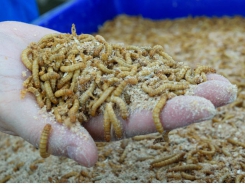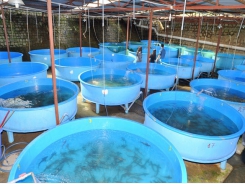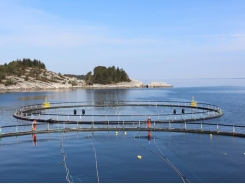Novel tilapia production and feeding system in Brazil

The Brazilian aquaculture technology firm, Fisher Piscicultura, has been developing a round, floating production tank to feed and raise tilapia in an effort to reduce feed costs and mortality rates in tilapia production, says executive.
Photo © GettyImages/ Anthony Paz
The management system is currently being tested on the Grande River.
The goal of the project was to design a system to support expanding tilapia production, said Alexandre Pulino, director of development with Fisher Piscicultura. It was developed to address inefficiencies in the aquaculture methods commonly used.
“One of our partners installed and managed the operation of a large-scale project for tilapia production (3.600 t/year) using regular size cages (18 m³) and manual feed,” he told FeedNavigtor. “In that project, he had over 1,000 cages and a labor force of around 50 to 60 people to feed, classify and handle the fish and the cages. It was very inefficient in terms of workforce and very hard to manage the production properly.”
Work on the novel production and feeding system started in 2013 and took about a year to plan and six months to build, he said.
“In 2015 we carried out the first tests field tests of the structure and other devices of the cage,” he added.
The production system saw its first test at full capacity in 2016/17, he added.
“We believe this will be the cage technology to large-scale projects that will allow the operations in Brazil to grow,” he said.
In 2016, the tilapia production industry was forth about BRL 1.33bn, according to information from the national statistics bureau (IBGE). About 357,639 metric tons of the fish were raised in 2017.
In addition to the work done by Fisher, the project also has outside support from the São Paulo Research Foundation (FAPESP) and its Innovative Research in Small Business Program (PIPE), according to company information.
During the development process, the company reached out to researchers with São Paulo State Agency for Agribusiness Technologies (APTA) to have a third-party verify the research, said Pulino.
“Along with them, we went after FAPESP and PIPE,” he said. “FAPESP approval of our research project certifies that we have an innovative product, and facilitates raising funds for innovation.”
Feeding, production system details
The cage and feeding system provides 450 m3 in internal volume, and measures 12m in diameter, 4m high on the inside and 14m in diameter and 7m high externally, said Pulino. The system is intended to raise about 33 tons of tilapia.
“It receives around 80,000 juveniles at the beginning of the cycle, and this lot is divided in two cages during the production,” he said.
The round cage has a central pivot and rotating screens of different sizes to separate larger and smaller fish, he said.
“The cage has a door and a slice cage (as a pie slice) that we can insert in the cage to take the separated fish out,” he added.
Additionally, the tank has floating plastic rafts attached, which can be inflated used to lift it out of the water for cleaning, the company said. A solar-powered feed dispenser sits in the middle of the unit and can manage about 1,200kg of feed.
The feeding system distributes a set amount of feed 48 times a day and has improved feed conversion rates to less than 1.5kg of feed to kilogram of weight gain, said Pulino. The feed is released often to decrease competition and reduce stress on the fish.
When in use, the company has recorded a drop in mortality rate for tilapia from 20% to about 7%, he said. There are likely several reasons why the mortality rate has dropped, including that there is less competition for food among the fish.
“We do not take the fish out of the water during the classification process, which is the separation of the lot to obtain fishes of different sizes,” he said. “The big cages are stable to wave effect, so the net of the cage does not rub the fishes as small cages do. This rubbing effect can harm the skin of the fish and take away the mucus that protects them against bacteria or infections.”
During the development process elements of the design have been strengthened, he said.
“The main changes along the process are related to construction methodology and reinforcements of the structure,” said Pulino. “Nowadays, our fabrication process and installation allows us to erect more than one cage within one month.”
Additionally, the company is continuing to tweak the feeding system used in the production tank to make the mechanical system used more “robust” and to improve the software, he said.
“The next step is to make the cage an industrialized product, that is, to have a production line to manufacture the cages,” he said. “Also making the feed system more robust and precise and the software friendlier.”
The system was designed for use with tilapia production, however, it also could have implications for other aquaculture producers, he said. Other fish species raised in large, fresh-water reservoirs like Pacu or Tambaqui likely could also be raised in the system.
Related news
Tools

Phối trộn thức ăn chăn nuôi

Pha dung dịch thủy canh

Định mức cho tôm ăn

Phối trộn phân bón NPK

Xác định tỷ lệ tôm sống

Chuyển đổi đơn vị phân bón

Xác định công suất sục khí

Chuyển đổi đơn vị tôm

Tính diện tích nhà kính

Tính thể tích ao




 Can IoT tool help fish farmers sleep better…
Can IoT tool help fish farmers sleep better…  EFSA reviews environmental risk from hiking levels of…
EFSA reviews environmental risk from hiking levels of…